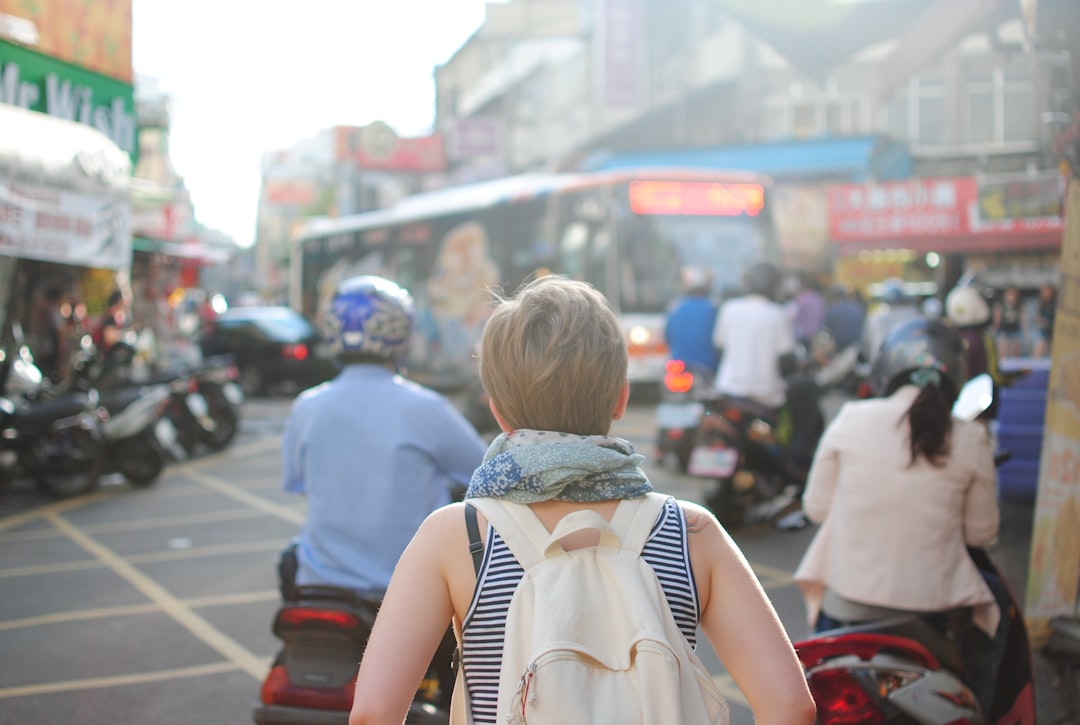One of the best parts of traveling is trying new foods. However, there is no greater disappointment than finding yourself in an overpriced tourist trap restaurant surrounded by loud, confused vacationers wearing khaki shorts and fanny packs. Most of the time the food is just as disappointing as the atmosphere.
And aside from being expensive, tourist traps take away your chance to eat like a local, which in my opinion is one of the best ways to actually get to know a new place. Here are some questions to ask yourself if feel like the restaurant you’re heading to might be a tourist trap.
1. Is this restaurant in a touristy area?

Chances are if you’re going to a restaurant that is really close to a huge tourist destination (like the Eiffel Tower or the London Eye) it’ll be a tourist trap. I learned this the hard way in St. Petersburg, Russia.
My friends and I decided to search for a restaurant on Nevsky Prospekt, which is one of the most famous streets in the city and is central to tons of department stores and museums. We ended up paying a lot of money for mediocre food. We ate much better meals in the less busy areas with fewer tourist attractions.
2. Do they have a menu in English?
If you are in a non-English speaking country, an English menu is usually a good indicator that the place you are at is very tourist-friendly. Of course, if you and the people you are with don’t speak the language an English menu might be useful, but you sacrifice the quality of your food. After all, you won’t find truly local foods at a tourist trap.
3. Do they have a blaring menu sign or food on display?

A big, sandwich-board style sign with a restaurant’s menu or specials is a major red flag (but don’t worry about small menus printed on paper outside the front door). Also, restaurants that have plastic versions of their foods in the window are big no-nos. Would you ever eat at a restaurant that had those gimmicks in the U.S.? Probably not, so don’t change your standards just because you are in an unfamiliar country.
That being said, checking out American fast food chains can be fun while abroad because they offer such different options. In some countries, McDonald’s serves alcohol.
4. Are the other people in the restaurant also tourists?

A restaurant’s clientele says a lot about the kind of place it is. If you are still feeling uncertain, try to take a peek at the other diners. Do they seem like locals or tourists? Stereotypical giveaways of a tourist include backpacks, sneakers and cameras.
Need some advice on how to recognize American tourists? Here are some qualities that Europeans say are dead giveaways that someone is an American abroad.
5. Was it recommended to you by a hotel or travel website?
Your hotel is likely to recommend a tourist place because they assume that is where you will be comfortable. You can avoid this by asking the front desk their personal favorite restaurants.
Similarly, sites like Yelp and TripAdvisor are great resources, but your findings must be taken with a grain of salt. Make sure to take note of who is writing the review of a restaurant you find because tourist-traps often get great reviews from tourists.
So what can you do to avoid tourist traps?
If you’re still worried about avoiding tourist-traps, there is more you can do to ensure a great eating experience abroad. Keep these three tips in mind.
1. Plan ahead.
I cannot emphasize this enough. If you want to avoid overpriced and touristy restaurants, you must plan ahead. If you’re plan is to just wander the streets until you find something appealing, you are going to end up hungry, annoyed and ultimately settle for a less than ideal restaurant.
Of course, sometimes you might serendipitously find an amazing hole in the wall spot without planning to, but for the most part you should go into your restaurant search with a plan.
2. Reach out to people who have been there before.

Chances are there is at least one person at your school who has studied abroad in the same place you are going. Contact your study abroad office and see if they can give you the name of someone to talk to. Many study abroad programs also provide this valuable service.
Once you’ve been connected with someone, ask them about their favorite places to eat. They probably have a favorite cafes, brunch spots, bars and more.
3. Read food blogs and websites.

We live in a digital age and you should definitely take advantage of that. Look up the place you are going on Instagram and you’re sure to unveil tons of local food Instagram-ers. Spoon University also has an amazing collection of articles about eating while abroad. Like this one on how to eat in Italy without looking like a tourist, or this one on the best places for vegetarians to study abroad.
It isn’t super hard to eat like a local and no matter where you go, you just can’t settle for what’s convenient. Trying new foods and restaurants is one of the best parts of traveling abroad, so it’s worth it to put in the work to do it right.






